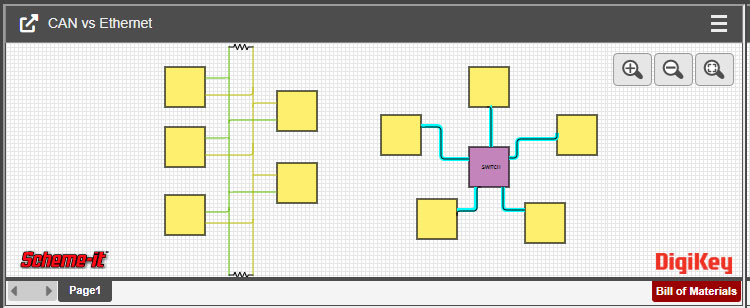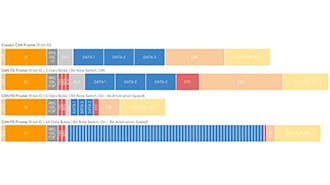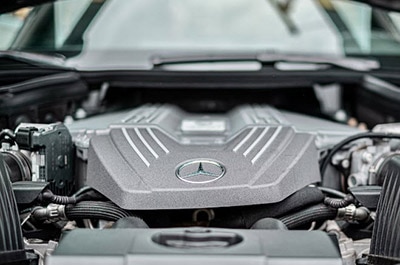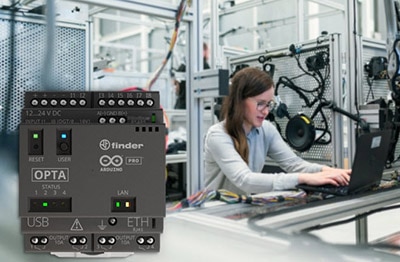Automotive Ethernet vs the Traditional CAN Bus
2024-09-25 | By Will Siffer
A brief history of vehicle communication.
Think of your car or a family member's car. Chances are someone you know has a car that has some features that are commonplace today but are really pretty advanced. Since 2015, all vehicles need to have reverse backup cameras, meaning they also need screens to display the image. Cars are also being sold with advanced blind spot radar systems, adaptive cruise control, steer-by-wire, and even self-driving technology! In 1987, Intel released the first implementation of the CAN Bus, which you can read more about here, and cars have only gotten more complicated. As vehicles gained more features, CAN-FD was implemented and was able to squeeze more data into the same networks to handle higher complexity and more sensors across the vehicle.
As self-driving cars become more common, even faster data rates are necessary, and the familiar ethernet protocol used in your home and office was modified to fit the harsh environment of a vehicle.
What is Automotive Ethernet, and why do we really need it?
Consider these two topologies below. As you can see, with the CAN bus, each module on the bus is connected to every module on the network. This means that every module can see what every module is broadcasting. This can be helpful but makes it challenging to increase speeds since everyone needs to hear everything on the bus. With automotive ethernet, a central switch is put in and behaves very similarly to an ethernet switch in your home. Each module is connected to the switch, and the switch can determine what information to send to other modules. This allows for point-to-point communication and faster speeds!
With speeds of up to 10 Mbps, automotive ethernet can move at the fastest rate available for CAN networks while also enabling the point-to-point communication I previously mentioned.
Another aspect of the point-to-point nature of Automotive ethernet that proves to be beneficial is the lack of necessary conflict resolution protocols. Since CAN bus topology can have multiple communications happening at once, there are frequently conflicts as a pair of wires can only be used to carry one message at a time. The point-to-point style of automotive ethernet allows for very few conflicts and thus adds simplicity.
These benefits prove to be especially useful when it comes to advanced driving systems like self-driving and ADAS (advanced driver assistance systems) in the form of adaptive cruise control. These systems need to be able to communicate quickly and effectively with sensors and have as little latency as possible.
Modifications from standard ethernet.
Typical Ethernet protocols use two pairs of twisted wires: one for transmission and one for receiving. Unfortunately, when it comes to vehicles, the wiring harness needs to be made as light as possible since the average vehicle contains miles of copper wires.
Another key difference is that vehicles have significantly more EMI (electromagnetic interference) and environmental interference from dust and debris than ethernet found in your home and office. Further, the typical ethernet system may only last a few years, while an automotive ethernet network may need to last a minimum of 11-12 years without an update.
Downsides of Automotive Ethernet.
Unfortunately, Automotive Ethernet does come with its downsides. Even with its faster speeds, it still cannot yet outpace current CAN bus networks, so automotive manufacturers are hesitant to spend the time and money changing their communication protocols. Another downside is that although the standard was modified to have fewer wires, the system is still heavier due to the added weight of necessary switches and interface components. Finally, the fact that it is new means there are many tests and validation exercises to go through before it is ready to hit the open road.
Whether you found this page because you were searching for more information on Automotive Ethernet or if you stumbled across it coincidentally, I hope you learned something new today. I know as I wrote this blog, I learned a lot about Automotive Ethernet technology and learned that I still have more to discover. If you are interested in more articles about vehicle communication, I encourage you to read the CAN bus and CAN-FD articles that can be found linked at the beginning of this post.










